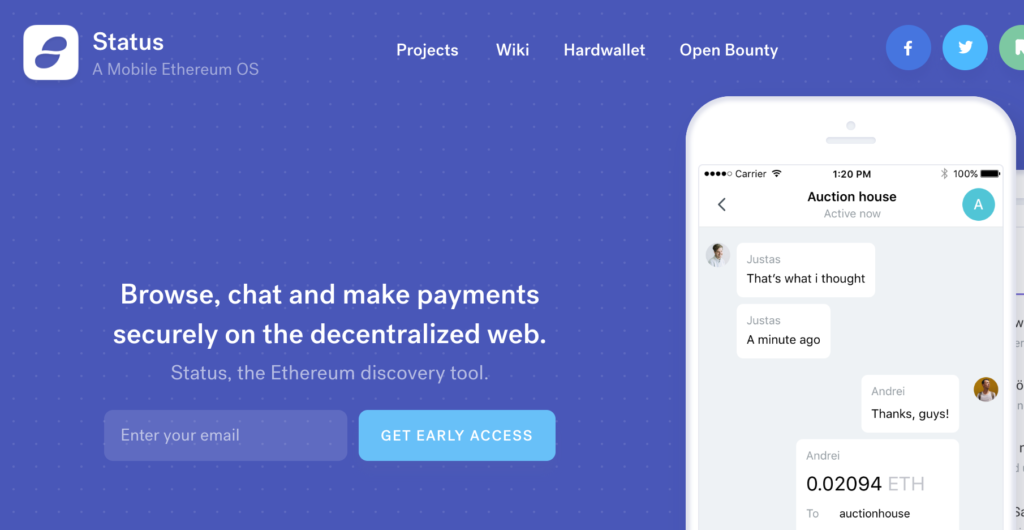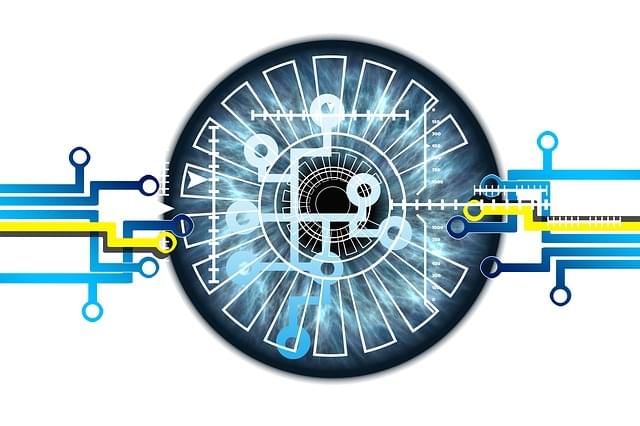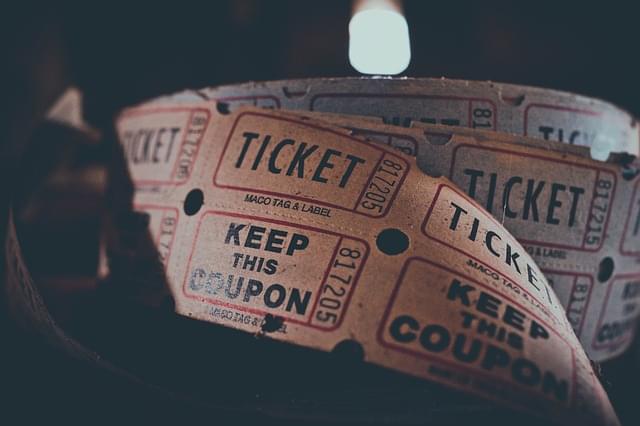Blockchain is often being shoehorned into projects it shouldn’t be a part of, so it’s hard to find out how viable it is long-term, and whether or not it can actually end up being used for something.
With that in mind, we’ve compiled this list of top nine uses for blockchain that are not only viable, but also necessary and highly probable.
1. Financial Freedom

The first and most obvious use is decentralization of money. Bitcoin’s original purpose was a cheap and easy but trustless way to transfer monetary value to anyone in the world at any time of day. As that vision slowly faded away, others took up the mantle and now there are many cryptocurrencies that do just that. In underdeveloped countries that skipped landlines and moved straight to smartphones with data connections, e-banking is now possible as long as those people are willing to be their own banks.
But how viable is this? If large corporations like Facebook, Google and Twitter can be commanded to ban cryptocurrency-related advertisements, the unbanked will need jailbroken and rooted phones to install some of the software essential for an entry into cryptocurrency. This might present a hurdle we’ve yet to conquer. The various app stores are, after all, still highly centralized.
Still, blockchain’s ability to not only let people set up their own trust funds (smart contracts with Ethereum) or organize their own savings and retirement funds is something the world won’t be able to ignore for long — for better or worse.
2. Decentralized Data
The blockchain running on several thousands of machines all over the world makes it possible to do wonderful things with data. If you suddenly get the ability to run code, store data, or process mathematical operations on every machine in the world, you can easily find scenarios where this might become useful.
Projects like Golem and iExec make it possible to distribute compute-heavy tasks like rendering graphics or executing CPU instruction respectively, by splitting tasks into thousands of smaller pieces and returning a verified solution to each, forming the master solution at the point of origin. Imagine not having to rent a supercomputer and being able to map the human genome in seconds using distributed computing and paying the executors in pre-purchased tokens!

The potential for data storage is another big deal in blockchain. While we do have Bittorrent and similar solutions, there’s no incentive for keeping files seeded and thus recoverable for a long time. Projects like IPFS, Siacoin, Filecoin, Storj, Maidsafe, Datacoin and others are developing ways to store files across multiple machines in an encrypted and private but incentivized and safe manner. Siacoin, for example, pays users to rent out their extra hard drive space. The users are paid in Sia tokens and right now, though file access is slower than S3 and similar private solutions, it’s cheaper and shows a lot of long-term potential. Even for databases, there’s BigchainDB and similar options.
Finally, games. With all the data and files being distributable and with the security of the Ethereum blockchain backing the network, many games with collectibles have cropped up. There are still challenges to be resolved, but with scaling solutions like Loom’s dappchains, high-throughput games are finally becoming a possibility.
3. Decentralized Internet and Chat
By utilizing the decentralized data aspect mentioned above, we can store websites on various computers around the world and retrieve them in a decentralized way.

Where up until now we needed a central server (or cluster thereof) to host websites or transmit messages online, Ethereum’s Swarm and Whisper protocol is making blockchain-based chatting and distributed file retrieval possible.
Status and Toshi, the first platforms to fully dive into these concepts, have grown into platforms for launching decentralized applications. They are, in effect, their own app stores with blockchain APIs exposed, but which can also communicate with the smartphone they’re installed on. This makes decentralized fetching of websites and sending of messages possible.
A Facebook or YouTube which can no longer censor content based on region, or a chat platform which can no longer be shut down when a revolt happens: all this is now a reality. It’s a UX nightmare and we’re working on this, but it’s here and it works.
For an example of a decentralized web application running fully on a blockchain, see DelegateCall.
4. Immutable Records
Another use case that’s rather straightforward is immutable records. This can be done in two ways: verification style and full-store style.
Verification is when a user keeps the original of a file somewhere, preferably signed with a private key of some authority or actor or provable identity, and then hashes it. This hash is stored into the blockchain, and when re-hashed the file can be easily verified for accuracy. However, this presumes the existence of the file somewhere outside the blockchain.
Full-store style is when the file itself is encrypted with a private key and stored wholly on the blockchain somehow — perhaps using one of the decentralized data solutions above. Then, the file remains forever accessible and verifiable.
This is useful in a whole bunch of areas. for example, criminal records shouldn’t be wipeable, and you should be able to identify an offender at any time in any jurisdiction, even automatically when crossing the border. The same goes for health records: there’s no reason for them not be interchangeable and verifiable by every health institution on earth. Encrypting a health record is trivial, and when required it can be decrypted on the spot with the private key of a patient which can be something as simple as a fingerprint or iris scan.

Ownership of real estate or deeds is also a perfect use case: the ownership can change hands, in which case the new owner is written after the old one with the private key of the old one, signifying a legal exchange, while an auto-auditable paper trail remains.
5. Automation of Civilization
Referencing the above auto-auditing, we can use the blockchain to remove a big part of the middleman industry. Real estate agents, resellers, a lot of lawyers and accountants … even tax inspectors. If a country transitions to a well developed central-bank-issued cryptocurrency, all the transactions will immediately become auto-auditable with 100% accuracy. This means no tax reports, no inspections, no fines, no lost money trails. It’s a cashless society 2.0.
6. Democracy (Voting)
Elections are often plagued with corruption and scandals, not to mention the long queues and the younger generations not voting because it’s simply too impractical. Moving elections onto the blockchain enables them to be not only fair and verifiable, but also opens the door to merit-based voting, which many say is the only thing able to save democracy — whereas right now everyone has one vote …

In a merit-based democracy, which is easy to automate with blockchain, a farmer could have five times the vote power of a lawyer as far as crop dusting limits and regulations are concerned. What’s more, this lets the government ask the people to vote for anything as often as they like, without enormous campaign costs and the parades that follow: a simple notification on an electronic device, and the user could reliably vote from the comfort of their own home.
7. Loyalty Points
A more trivial but no less popular (and widely in use!) purpose for the blockchain is tokenization of loyalty points. With the almost free infrastructure of the blockchain in place and scaling solutions like Loom’s dappchains in the works, many companies are transitioning to a loyalty point system where users collect tradable tokens.

If I have three Domino’s tokens and my friend has five, why wouldn’t I be able to send my three tokens to her so that she can order our free eight-token pizza online by simply sending the tokens to Domino’s Ethereum address?
8. Royalty and Proof-of-authorship
Building on the aspect of immutable records, blockchain can also digitize ownership of creative content. By hashing a digital work like a digital painting, a song, a movie, or anything else and uploading it to the blockchain, you can prove that you’re the original author of said work — irrevocably. This technology is fully admissible in court as proof, because the blockchain is immutable and ultimate in its truth about a certain state. And that state says that you proved yourself as owning said work at a moment in time.
One example of a running application that does exactly this is Po.et.
9. Company Management
Last but not least, there are DAOs. A DAO is a decentralized autonomous application, and kind of ties into the Democracy point above. Where a government could use the blockchain to tally votes, a company could replace its entire board by blockchain users. This is what DAOs do today.

A DAO will distribute tokens to its investors, and these tokens will be used as voting rights. Any decision the company needs to weigh will be voted on by token holders. For example, imagine an investment DAO which can invest into other projects using the Ethereum collected during the investment phase. A user suggests that project YetAnotherICO deserves an investment. This user can send this in as an official suggestion (all automated) and others can vote on their call within a timeframe. Depending on how many tokens there are in an address, that’s how much weight that address’ vote has. If the majority votes in favor, the suggestion goes through.
An interesting use case for a modern DAO is AmpNet, which lets people sell electricity peer to peer, while a famous failed case (due to improperly written code) is the DAO incident.
Bonus: Supply Chain
You may have heard many pundits mention the supply chain as a good use case for the blockchain. The idea is that a given good is tracked from origin to destination using QR codes and sensors, so a customer in a store can simply scan a product’s QR code and see its whole origin trail (hence, the company OriginTrail).
However, this is not a viable option as long as there are humans in the pipeline. Humans are, by default, fallible. They are the weakest point of any automated system, and if a truck driver whose fridge has blockchain-connected temperature sensors on the crates of tomatoes in the back and the driver’s salary depends on his success rate, you can be sure that most drivers will rather stop at a gas station, get ice, and pour it directly onto the sensors when the AC fails than let a robot decrease their salary.
Only when humans have been completely removed from both the production and transportation of goods will we be able to use blockchain for the supply chain.
Conclusion
Blockchain is a viable solution to many problems, but an ill-fitting one for many more. When considering whether or not your project needs the blockchain, be sure to consult blockchain experts before you proclaim your project blockchain based.
Don’t lock yourself into a technology for marketing reasons. Really study whether or not it’s viable. Even if it is, you might be ahead of your time in your problem solving (like with supply chain), so playing it safe and waiting is better than rushing.
 Mateja Kendel
Mateja KendelMateja is a dermatology specialist who recognized the potential of the blockchain when she became aware of how inefficient the current way to exchange, synchronize, and secure medical data is. She is now studying blockchain technology and looking into applying it to her field of interest, writing about what she learns when she can.






